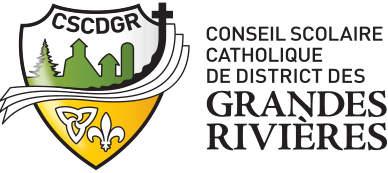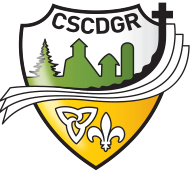
Philosophy and service model
The CSCDGR strives to provide education programs that meet the needs of all of its students. It is for this reason that educational programs and services for students with special needs are offered. Thus, each student benefits from an environment and a teaching program that promote their learning, socialization and full development.
In order to maximize student success, as well as their integration into the school and the community, the Board commits to:
- focus on learning to be independent;
- promote the acceptance and development of each individual, as well as equal opportunities;
- consider the parent or guardian as a privileged partner, recognizing that no one else knows their child better;
- promote and foster close collaboration between all partners, including the student, parents or guardians, school staff, specialists and members of the community;
- provide and facilitate training, mentoring and support to its staff.
Intervention pyramid
Our process for helping students with special needs encourages parents to actively participate in decision-making regarding their child's educational progress. Service delivery is delivered using the Pyramid of Intervention model with the Board referral process.

The intervention pyramid generally has three levels of intensity. The frequency and level of support increases with each tier, from tier 1 to tier 3. It is a flexible and fluid service model. An intervention, or service, can be added, modified or withdrawn according to the strengths and needs of students and teachers during the school year.
It is important for the school to align the different services it provides to students requiring enrichment, remediation and re-education. The same goes for all the interventions made with students and the services offered to them. Everyone must be aligned using the pyramid. This alignment allows:
- coordinate services and programs;
- evaluate and adjust services;
- facilitate collaboration between stakeholders;
- to intervene quickly and effectively with students.
The interventions of the school strategic team must be found in all three levels in order to prevent academic and social difficulties. In addition, the interventions of levels one, two and three carried out with the students must be the subject of continuous evaluation. This will be carried out at regular intervals, pre-established by the school strategy team. This evaluation ensures the effectiveness of interventions and the coordination of services.
Level 1: Universal level
The school strategy team works with teachers and other school stakeholders to offer universal interventions, that is, they can be addressed to all students. At this level, systematic screening targets all students. In addition, school stakeholders promote educational programs and methods validated by research.
Level 2: Targeted additional education
At this level, the School Strategy Team provides additional instruction to groups of three to six students with a common goal. This education is offered over a fixed period of six to eight weeks. Interventions are planned with the teacher in the classroom. It is important to note that the interventions are usually in addition to the teaching time. They should not replace teaching time in the classroom.
Level 3: Intensive intervention level
The school strategy team offers additional intensive interventions to students. These interventions are usually done on an individual basis, outside of the classroom. It is important to note that any student can receive intensive interventions, even if he or she does not have an intervention plan.
According to research, 80% of students in a classroom will benefit from effective and rigorous instruction. As for the other pupils, 15% of them will need special support and 5% will require intensive support. (source: Fuchs and Fuchs, 2001)


